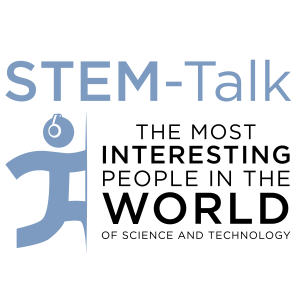
Episode 91: Irina and Michael Conboy explain tissue repair and stem-cell rejuvenation
 2019-07-02
2019-07-02
Download
Right click and do "save link as"
Our guests today are Drs. Irina and Michael Conboy of the Department of Bioengineering at the University of California Berkeley. In their lab at Berkeley, the Conboys investigate the process of tissue repair in the body in an effort to determine why damaged tissues do not productively repair as the body ages.
In today’s interview, you will hear the Conboys talk about their early research and a fascinating technique they pioneered called heterochronic parabiosis, where the couple took a young mouse and an older mouse and sutured them together so the animals blood and organs. The Conboys found that the older mouse benefited from this fusion, its aged stem cells becoming rejuvenated and its muscle tissues becoming functionally younger.
Since then, the Conboys’ follow-up research has provided fascinating insights into stem-cell niche engineering, tissue repair, and stem-cell aging and rejuvenation. In 2015, they published an important study showing that high levels of the protein TGF-β1 impaired the ability of stem cells to repair tissues. While their experiments also showed that giving old animals young blood appeared to have some benefit to old stem cells, the Conboys’ most recent work provides compelling evidence suggesting the more interesting benefits are instead produced by a dilution of harmful signals in old blood.
The research coming out of the Conboy lab has profound implications in terms of postponing the onset of age-related diseases as well as the prevention of such degenerative conditions such as Parkinson’s, Alzheimer’s, osteoporosis and sarcopenia.
Show notes:
[00:03:23] Dawn opens the interview asking Irina about her time as a gymnast in the Soviet Union.
[00:03:56] Irina talks about how she became interested in biology.
[00:04:36] Michael describes how he was a bit of a nerd who spent a lot of time outdoors as a kid studying bugs.
[00:05:29] Ken asks what Michael’s plans were when he started his education at Harvard.
[00:06:00] Ken inquires as to what it was about lab work that attracted Michael to the point where he abandoned medical school and focused on research instead.
[00:06:56] Irina tells the story of her first overseas visit to Boston and how a female friend of hers had set her up with multiple dates for her visit before her plane had even touched down in the states.
[00:09:06] Michael recounts the story of his first time in Moscow, where he asked Irina if she wanted to hang out.
[00:10:52] Dawn mentions that after graduating, Michael got a job as a lab tech at Harvard, but eventually moved to Philadelphia to join the lab a friend of his was starting. Michael goes on to explain how he and Irina eventually became professional lab rats together there.
[00:13:44] Michael explains how he would likely still be a lab tech if it were not for Irina and her desire to study aging, and how that inspired him to pursue his doctorate at Stanford.
[00:15:10] Dawn asks Irina about her pursuit of a Ph.D. at Stamford in auto-immunity in the lab of Patricia Jones.
[00:18:30] Dawn asks Irina to explain her discovery that Notch Signaling had the potential to regenerate aged muscle, a discovery she made during her post-doc work at Stamford.
[00:21:30] Dawn mentions that Irina finished her post-doc work before Michael did, which allowed her to get work at a competing laboratory. Dawn asks if working at a competing labs created tension between the two of them.
[00:24:26] Ken asks Irina what led her to look into reactivating old stem cells and whether that might delay or even reverse the onset of aging.
[00:26:00] Michael talks about his inspiration for the parabiosis experiment, which involved two mice, one old and one young, being statured together.
[00:30:12] Ken asks what the results of the parabiosis experiment were.
[00:31:57] Ken mentions that the 2005 paper in Nature, which documented the findings of the parabiosis experiment,
view more
More Episodes
012345678910111213141516171819
Create your
podcast in
minutes
- Full-featured podcast site
- Unlimited storage and bandwidth
- Comprehensive podcast stats
- Distribute to Apple Podcasts, Spotify, and more
- Make money with your podcast
It is Free
- Privacy Policy
- Cookie Policy
- Terms of Use
- Consent Preferences
- Copyright © 2015-2024 Podbean.com



